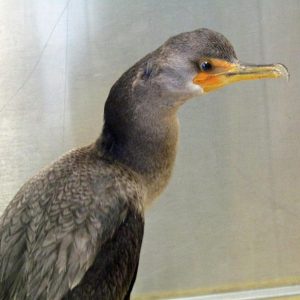 The following story was shared with us by Clinic For The Rehabilitation Of Wildlife (CROW) in Florida.
The following story was shared with us by Clinic For The Rehabilitation Of Wildlife (CROW) in Florida.
On November 12, an adult double-crested cormorant was found in Estero, Florida, unable to fly and walking awkwardly. On presentation the bird was quiet with a wide-based stance and mild head tremors. The bird also had poor feather quality and a subtle right-wing droop.
The primary differential or potential cause for its condition was brevetoxicosis, also known as red- tide poisoning. A possible trauma or aspergillosis infection may have occurred concurrently or secondary to being affected with red-tide, causing the wing droop. The bird had a body condition score of 1/5 and weighed 1.10 kilograms (about 2.4 pounds).
We gavage-fed 3 to 5 percent of its body weight of EmerAid Intensive Care Piscivore until he was well enough to eat whole fish. The bird’s weight fluctuated slightly over the following few days in care, but he was bright, alert, and responsive.
Once the patient started eating fish on his own, he was moved outside to a flight cage. After 13 days in care, the cormorant gained 200 grams (about 0.4 pounds) and had a body score of 2.5/5 at the time of its release.

